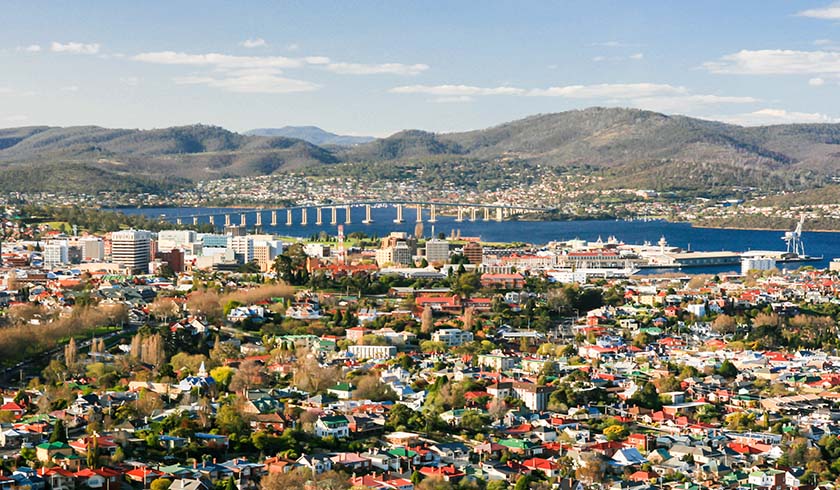Hobart expected to see ‘second wind’ of growth
Hobart has been a state that has seen a considerable amount of growth in recent years, and one property market research firm has claimed the island state has predicted more growth in its future.

Analysis by Propertyology’s head of research, Simon Pressley, has predicted that Hobart will see further growth after seeing solid performance of 33.4 per cent growth over the last five years.
Select areas saw even better growth during that time, with Glenorchy seeing 52.1 per cent growth, followed by Hobart City at 50.5 per cent, Kingborough at 44.7 per cent growth and Clarence at 41.4 per cent growth.
“There is no question that Hobart has been Australia’s best-performed property market over the past five years, and I think there’s a good chance of it gathering a second wind,” Mr Pressley said.
“Obviously, no one can give a definitive answer as to when the growth cycle for Hobart real estate will come to an end – if only there was such a thing as a crystal ball.
“None of us could complain if it ended now. However, Propertyology’s assessment of current conditions makes us believe that Hobart real estate prices still have petrol in the tank.”
The success behind the state’s growth was claimed to be the improvement in the state’s economy, which led to local buyer confidence and financial capacity improving, he said.
“When those same economic conditions are combined with affordable housing and a lifestyle which is growing in popularity, a significant swing in internal migration occurs,” Mr Pressley said.
“While a typical house in Hobart has increased in value by circa 50 per cent over the past five years, housing in Hobart is still affordable in relative terms. As at December 2018, there were 39 other Australian cities and towns with a higher median house price than Hobart, so there’s a lot of upside.”
The second wind
The combination of positive benefits in the national economy – the federal election results, APRA’s proposed lending guideline changes and the latest interest rate cut – are also being felt down in Tasmania, but their benefit is amplified through migration figures.
“The Tasmanian government is campaigning to encourage more people to leave the mainland, especially expensive and congested cities like Sydney and Melbourne. A continuation of solid internal migration is another reason why I believe there’s more price growth to come for Hobart real estate,” Mr Pressley said.
“Those who understand what has been driving Tasmania’s economy and the many good things in the pipeline will have very little concern about the outlook for Hobart’s economy.
“For the year ending March 2019, Tasmania was ranked first for growth in state demand, second for wage growth and third for growth in retail trade. Importantly, Hobart is also streets ahead of every other capital city for growth in job advertisements, a leading indicator for near-term economic growth and a helpful metric for property price growth.”
There are also a number of big projects slated for Hobart, which include a City Deal, expansion of the capital city’s airport, new hotels, infrastructure around the University of Tasmania as well as work for Macquarie Point.
Supply
Hobart is also unlikely to see an oversupply any time soon, Mr Pressley claimed, as the population growth has grown at a higher rate than supply.
Additionally, data from the Real Estate Institute of Tasmania showed that over three-quarters of property transactions in the state were by local owner-occupiers, and as such the lower investor activity meant that rental stock is in “incredibly low supply” with a vacancy rate of 0.6 per cent.
“The rental yields will still be attractive to new investors, while some renters will become home owners. I anticipate buyer activity to pick up and prices to accelerate again.” Mr Pressley said.
Additionally, high-density living is unlikely to take over Hobart any time soon, with 17 per cent of building approvals over the last three years.
“Five or six storeys is ‘high’ for Hobart,” Mr Pressley said.
“An inability to develop upwards means that most new supply must be in the form of sprawl in the outer suburbs – but that has some geographical hurdles that come by the names of Mount Wellington and the Derwent River.”
Mr Pressley added that the municipality of Brighton is considered to be “the most logical target” for developers, which is why he recommended against investing in the area.
